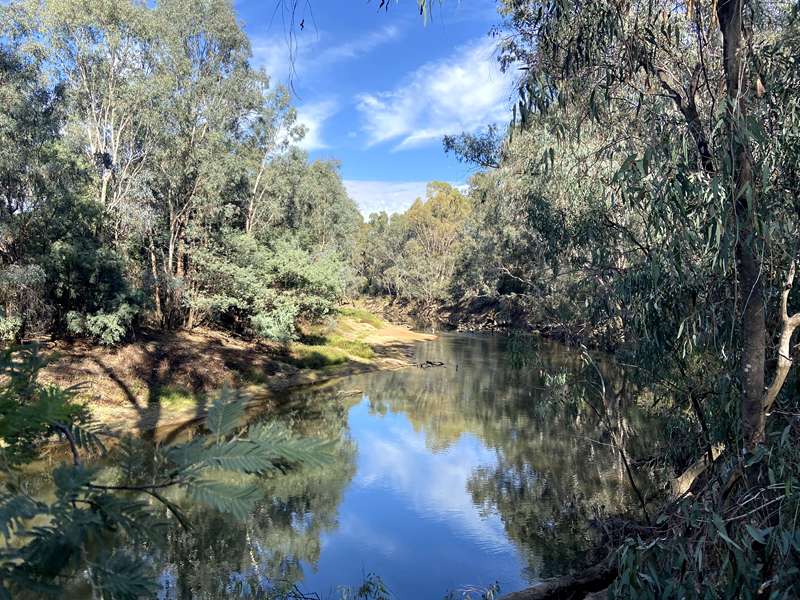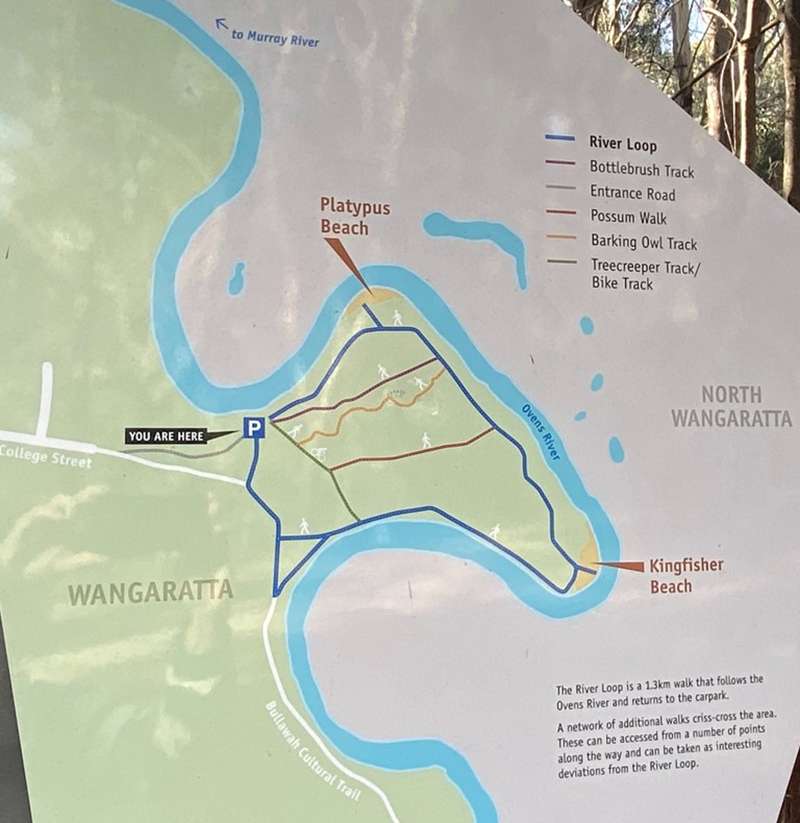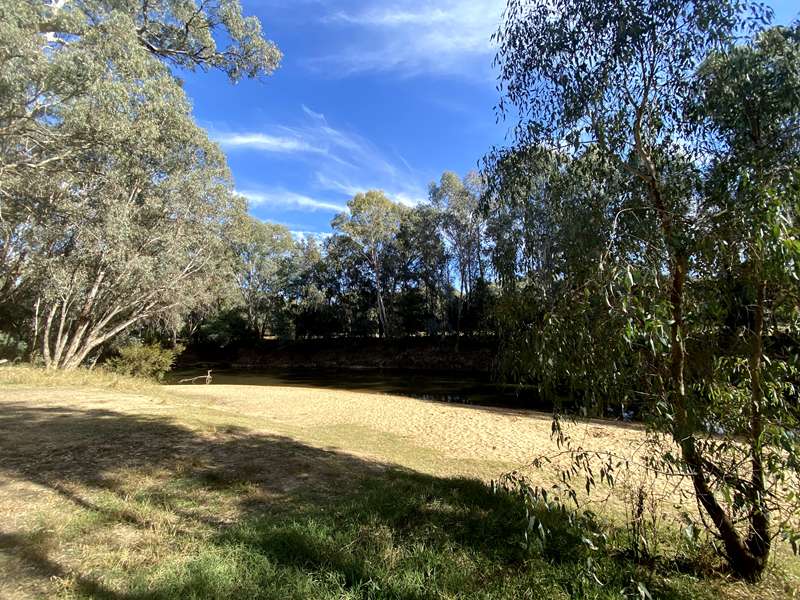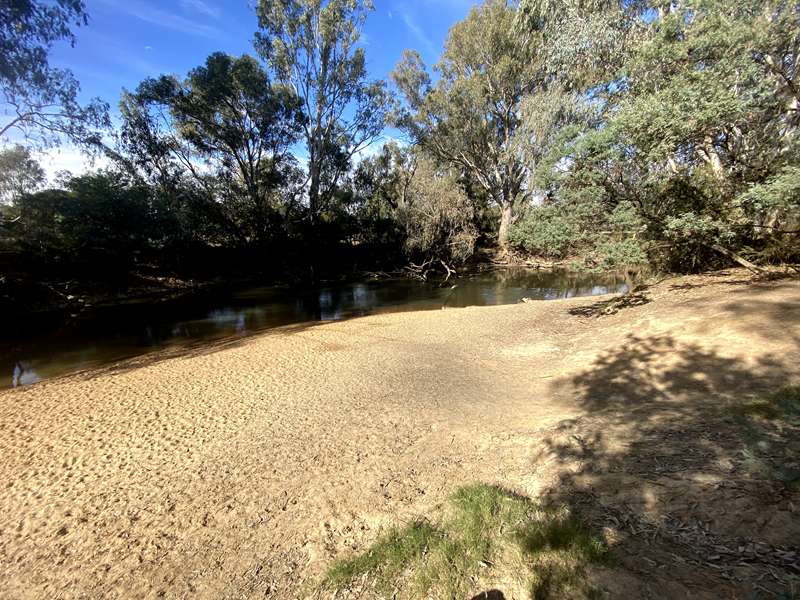Wangaratta Northern Beaches


The name, Northern Beaches, is derived from the two small. sandy beaches which grace the sharpest bends on this large loop in the Ovens River.
The 10.5 hectare reserve is a fine example of the Floodplain Riparian Woodland Vegetation Community. Northern Beaches is a living example of riverside vegetation qualities prior to European settlement.
Look around and you will see diversity - trees of all heights and ages and shrubs of varying shapes and sizes, old and new. Many different native grasses and ground-covers carry this diversity characteristic right through to ground level. Habitat diversity such as this can provide abundant food supply, protection and nesting potential for a wide range of birds and small mammals.
The banks of the river are steep and unstable in parts (please stay well clear!). In other places they slope down to reveal the inviting little beaches.
In a wet winter the area floods and the lagoons retain water for months afterwards providing further valuable resources for native wildlife and plants.
From here the Ovens River flows north into the Murray River near Yarrawonga. This section is 'Heritage listed' and protected as it is largely undisturbed and deemed to be indicative of pre-settlement conditions.
Aboriginal People
This river and its environs provided an important source of food and other products for local indigenous inhabitants. Significant evidence still remains - see if you can find a 'canoe tree' as you walk around the River loop - between Platypus and Kingfisher Beaches. Bark was carefully cut in a long elliptical shape from the trunk of the tree. Now visible is the characteristic canoe-shaped scar which is slowly healing by bark regrowing over it. In this case, the resulting small bark canoe would have been used to carry children or food.
Look out for:
- Treecreepers - These small acrobatic birds that hop up the trunks of trees and along branches (often hanging up-side-down) are feeding on insects.
- Scar trees - Significant scar trees in this area are Heritage listed with Aboriginal Affairs Victoria.
- Hollows - Hollows are homes for animals and birds such as owls and rosellas. Some of these are used by our resident Southern Boobook Owls (also known as Mopoke).
- Snakes - Give way to snakes on a path. They are shy, poor-sighted creatures and will not attack you unless in self defence, if hurt or frightened.
- Yellow footed Antechinus - A shrew like marsupial. The male engages in such frenzied mating that it results in a stress related death before it is one year old.
Northern Beaches Map

Walks
The River Loop is a 1.3km walk that follows the Ovens River and returns to the carpark. A network of additional walks criss-cross the area. These can be accessed from a number of points along the way and can be taken as interesting deviations from the River Loop.
Swimming
There are two beaches which are popular swimming places. Platypus Beach, which is 200m walk from the carpark, is the larger and more accessible beach.

The smaller Kingfisher Beach is a 800m walk from the carpark.

Access for Dogs:
The area is a dog off-leash area and dogs can swim at the beaches.
Photos:
Location
4 College Street, Wangaratta 3676 View Map








